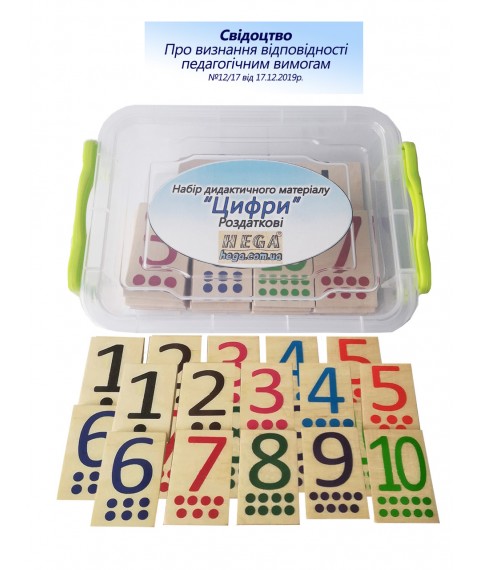Your child has learned to count to 10, but cannot remember numbers. The baby can confuse numbers that are similar in spelling, such as 4 and 7, 6 and 9, can confuse numbers and letters or numbers and numbers. Also, children often have problems when it is necessary to correlate the number of objects with their corresponding number. To help your child learn numbers faster, play number games with him. From what age should a child be taught to count? Apparently, it is necessary to start no earlier than the child turns one year old. Your child is the smartest and smartest, but this does not mean that at five years old he should read quickly, and at two years old - count to a hundred. Of course, he can count, but there is no guarantee that he, considering that he does not reproduce a number series like a poem, is not there. Develop a child's fantasy and imagination, play mathematical games with him, and then, quite possibly, you will raise a new Albert Einstein. We offer you a step-by-step account learning scheme. Step one: Playing with fingers (up to one year) Develop fine motor skills of the fingers by playing the traditional "Magpie-crow" game. and "Kui-kui-shoes". Read counting poems to the baby, but do not focus on the numbers. It is important that he catches the rhythm and understands that playing with his mother is interesting and fun. Step two: "One and many" (from one year to 2) Let's introduce the child to the concept of "many". For example: one doll or machine in the hand - and many of them on the shelf. Ask the child to give you one toy, and then several, many, show one finger and many. It is important that the baby feels the object in his hands. Praise the child when he has done everything correctly, and in no case insist on continuing the lesson if the child has lost interest. Step three: Let's compare! (2-3 years) Everything that can be compared comes into play. Offer the child objects of different sizes: a large car and a small one, a teaspoon and a canteen. Let the little one give you a little big thing. You can complicate the task: one doll lives in this house, but there are many in this house. Two dolls went to visit a friend, and in one house there were fewer dolls, in the other - more. Option for a boy - two garages with cars. If the child is interested, you can count how many cars or dolls there are in garages and houses. Step four: Consider! (3-4 years old) At this stage, you will need sets of numbers from the "HEGA" tm; - correlate the concept of number with the number of objects. Visuality is more important than ever! We master counting to ten on our fingers. When getting acquainted with numbers, explain, roughly, like this: "One looks like a thin man in a cap, two looks like a swan." We count to ten and back, lay out boards with numbers in order. Step Five: Three is three units! (5-6 years old) We explain the quantitative meaning of a number: "three consists of three units, four - of four units". That is why the corresponding numbers of circles are drawn on the number plates. We offer the child to count the circles under the number out loud.We build tables with a direct reverse calculation. Also, for the fastest, we suggest choosing a combination of 2 other numbers under the number. For example: on top, we put the plate 10 below 6 and 4. It is easy to learn with the "HEGA" tm. A set of didactic material "Numbers". Distribution tm "HEGA" has a Certificate of Compliance with Pedagogical Requirements. Allowed for use in educational institutions of Ukraine. The main differences of TM "HEGA" from competitors: 1. Only thick European plywood of the highest grade is used - 5 mm and more. This is a guarantee of the strength and quality of the toy. 2. Each part is processed separately - it is safe edges, borders, corners and excludes splinters. 3. In addition to paint, a protective layer of acrylic varnish is applied, this is a guarantee of safety, durability and the possibility of hygienic processing. 4. This toy is sold in this version in Europe. Safety of TM "HEGA" toys: 1. The size of all parts corresponds to DSTU - the child cannot swallow or choke. 2. Laser cutting is excluded - the smell of burning and the remains of soot DO NOT weather and never disappear! Remains of soot on children's products have been banned in all European countries for about 10 years - micron particles are dangerous for respiratory organs. 3. Paints - certified European Acrylic - safe to play with, put in hands and mouth.
* Attention. Product description can be obtained by machine translation.
